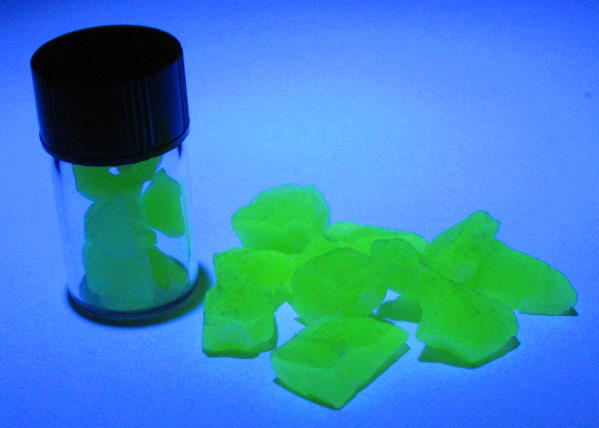Analysis of Kryptonite Sample
Initial inspection
The sample arrived as small particles of rock in a 5/8ths dram volume glass vial from Scitoys.com. The rock particles appeared white to yellow, with a green cast. In the dark, the material glowed brightly green. Experiments showed the glow to be phosphorescence charged by sunlight, but unlike normal phosphorescent materials such as zinc sulfides, the glow persists for over 12 hours, decaying exponentially with time.Chemical Composition
Analysis shows the material to be Strontium Magnesium Aluminate, doped with Europium and Dysprosium rare earth lanthanates, in an unknown inert matrix.Safety
While the sample is reported to be toxic to certain extraterrestrial organisms, this sample has low acute oral and dermal toxicity to rats, and is not irritating to rabbit skin or sensitizing to guinea pig skin. It is a slight irritant to rabbit eyes, with iris and conjunctival effects which cleared by 72 hours. These effects are likely to be due to mechanical irritation from insoluble particulate matter. In a 28 day repeat dose oral toxicity study, no treatment related adverse effects were seen at the only tested dose of 1000 mg/kg bw/day. It was found to not be genotoxic in an in vitro and an in vivo test. The constituent ions of the notified chemical (strontium, aluminium and lanthanides) are all of low acute oral toxicity, and are not likely to produce irritant effects unless in reactive forms. There may be inhalation risk or irritation if powdered forms of the material are used, but the sample arrived in solid pieces generally larger than a millimeter in diameter. The inhalation of airborne dusts will be reduced to a great extent by the high specific gravity of the material, the small proportion in the respirable size range, and the use of local exhaust ventilation.